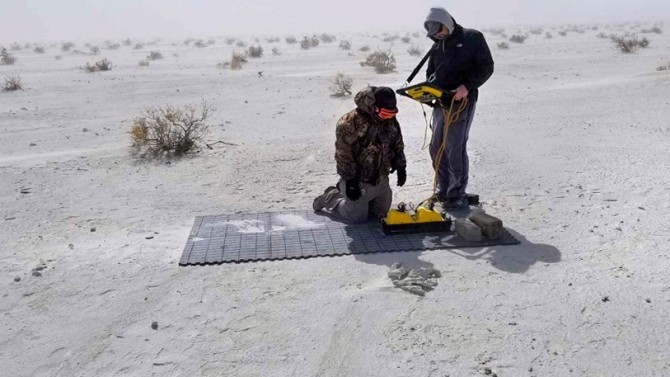
New information sheds light on the relationship between humans and their environment as scientists found a treasure trove of data as old as 12,000 years ago at White Sands National Monument in New Mexico.
UNDERSTANDING THE PAST
Researchers from Cornell University found fossilized footprints and lies beneath it that were hidden since the last years of the Pleistocene. These fossils are dated as far back as 12,000 years ago and were found using ground-penetrating radar (GDR), a nondestructive way of 'excavating' fossils. This methodology allowed scientists to examine and analyze footprints from humans, mammoths, and Megatherium.
In the press release issued by Cornell University, Thomas Urban, one of the scientists behind the study, explains that the findings took them by surprise. "We never thought to look under footprints, but it turns out that the sediment itself has a memory that records the effects of the animal's weight and momentum in a beautiful way." According to him, these fossils allowed them to understand the biomechanics of extinct fauna.
GROUND-PENETRATING RADAR
To discover these fossils, Urban and his team used a nondestructive GPR to be able to analyze hidden information without excavation. The radar uses a sensor over the surface, sending back a radio wave into the ground. This signal will provide a photograph of what's to be seen underground, including the pressure and momentum of the extinct foot and body that made those tracks.
Eventually, these fossils will be exposed to the surface by rain or wind, but for this study, the team used various geophysics methods. Co-author Sturt Manning, professor of Classical Archaeology at Goldwin Smith and director of Cornell Tree Ring Laboratory, explains, "Using geophysics methods, they can be recorded, traced and investigated in 3D to reveal Pleistocene animal and human interactions, history, and mechanics in genuinely exciting new ways."
The sensor used has an antenna that is dragged on the surface. Researchers explained that the response they were getting suggests that the substrate filling the prints have more moisture present than the surrounding sediment even under dry conditions. The effect of the sediments around the tracks will then provide the information on the pressure and momentum of the body making these tracks.
Besides, the study sheds light on the lifestyle of early humans during these times. Urban explains, "The GPR technique gets us to space in between these sites and lets us see how people are tracking animals or moving around for other tasks of daily life, there are very few footprint records of human-megafauna interactions. It's really rare to have access to this kind of data from 12,000 or more years ago."
© 2026 ScienceTimes.com All rights reserved. Do not reproduce without permission. The window to the world of Science Times.












